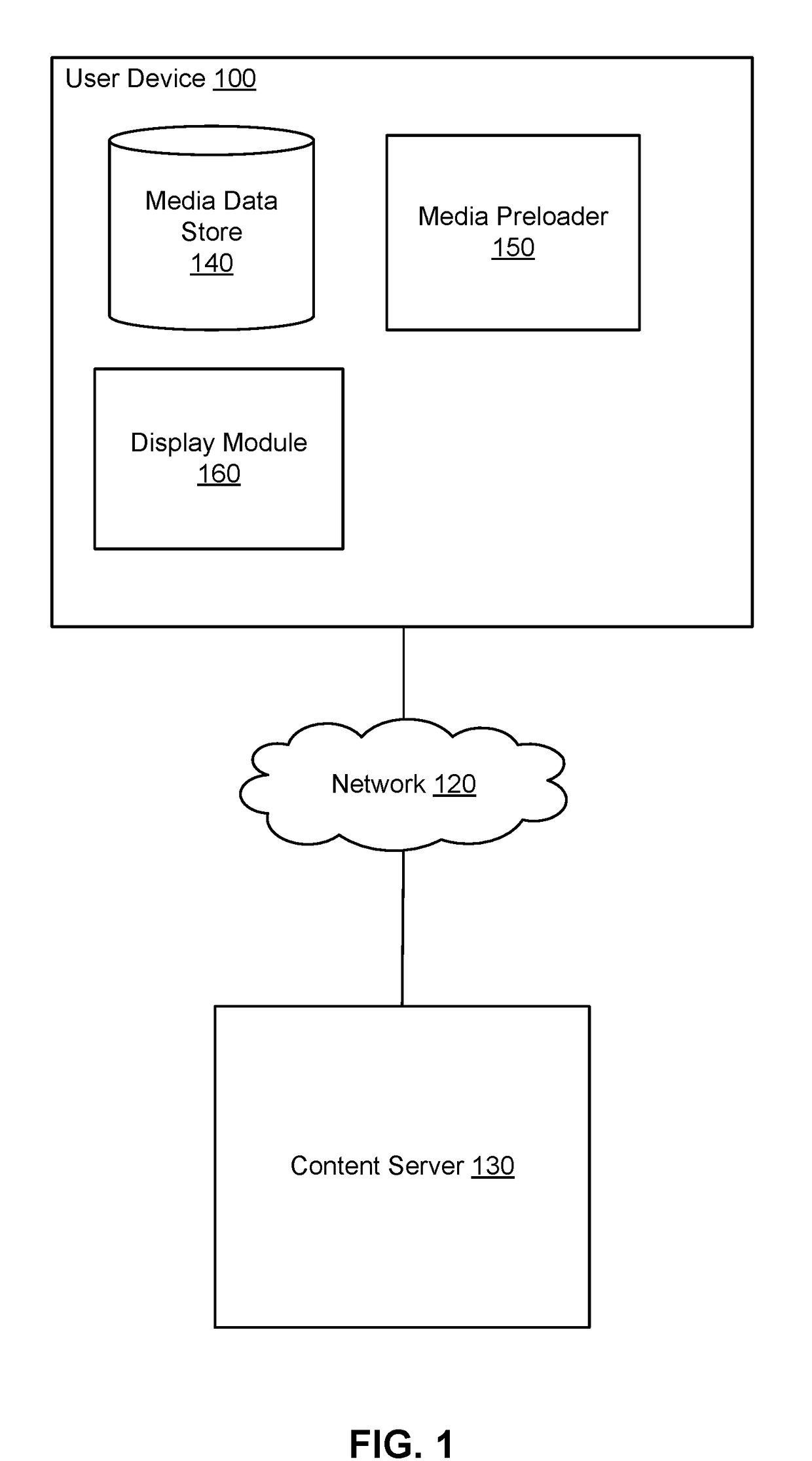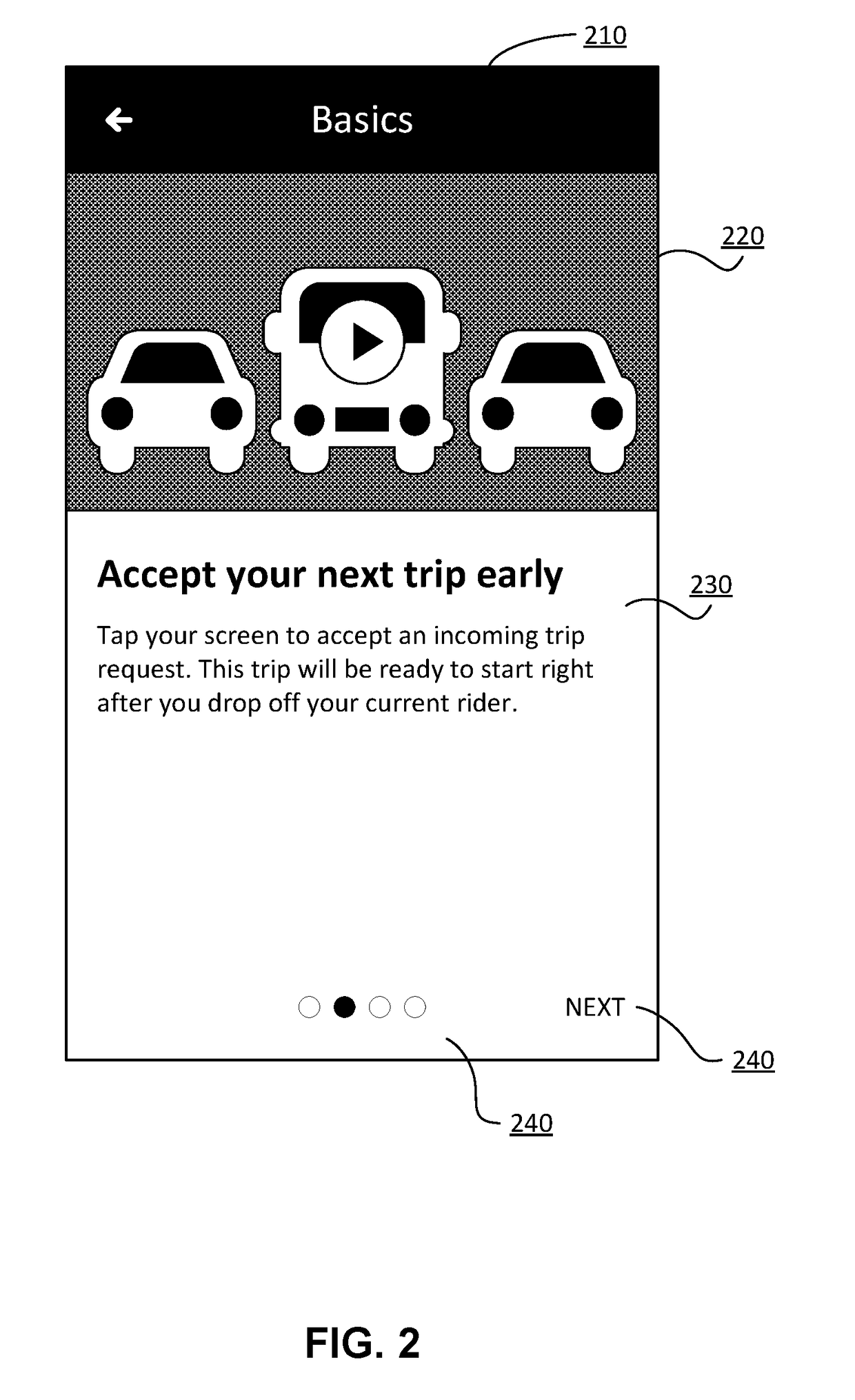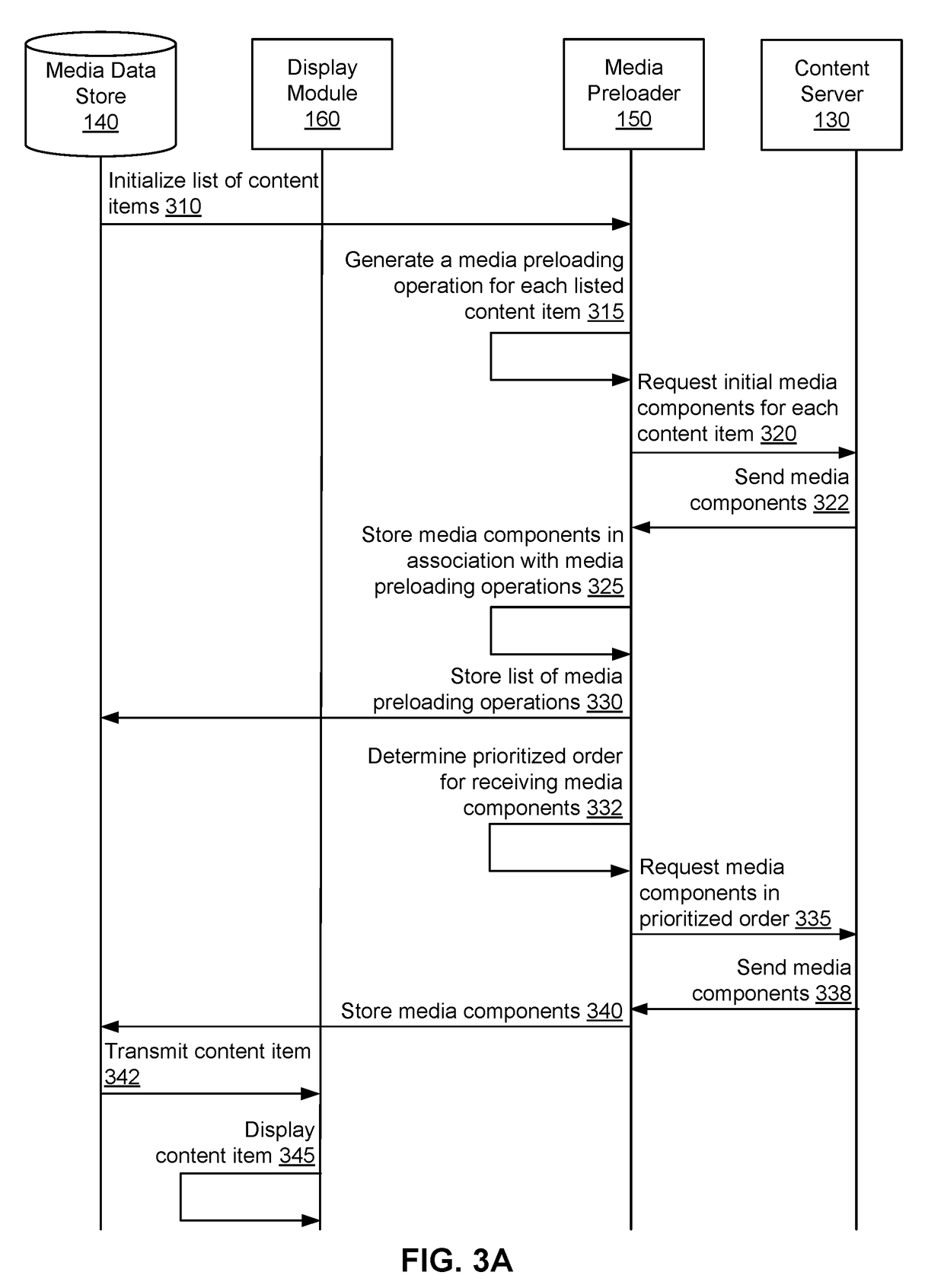Optimizing media presentation within an application
a technology for media presentation and application, applied in multimedia data browsing/visualisation, other databases, instruments, etc., can solve the problems of large amount of memory space, large data to transmit reliably, limited bandwidth, memory usage, etc., and achieve the effect of reducing the problem of limited memory, limited bandwidth, and high latency
- Summary
- Abstract
- Description
- Claims
- Application Information
AI Technical Summary
Benefits of technology
Problems solved by technology
Method used
Image
Examples
Embodiment Construction
[0016]A user device delivers media to a user as a set of content items. In some embodiments, each delivered content item may be viewed as an individual page or view of the content. For example, on a user device such as a smartphone, a user may be able to transition between views of different content items by performing an action such as swiping across a touch screen or selecting a widget that directs an application to the next content item. In some cases, a theme or lesson may be split into multiple content items that can be presented to a user individually, fostering a richer and more immersive media experience. Content items may additionally include multiple media components, such as videos, text, audio, and images, that can be displayed together (e.g., on a screen of a user device).
[0017]To address issues related to bandwidth, a content server serving content items to user devices may offer content at varying degrees of quality. For example, a video may be available for download ...
PUM
 Login to View More
Login to View More Abstract
Description
Claims
Application Information
 Login to View More
Login to View More - R&D
- Intellectual Property
- Life Sciences
- Materials
- Tech Scout
- Unparalleled Data Quality
- Higher Quality Content
- 60% Fewer Hallucinations
Browse by: Latest US Patents, China's latest patents, Technical Efficacy Thesaurus, Application Domain, Technology Topic, Popular Technical Reports.
© 2025 PatSnap. All rights reserved.Legal|Privacy policy|Modern Slavery Act Transparency Statement|Sitemap|About US| Contact US: help@patsnap.com



